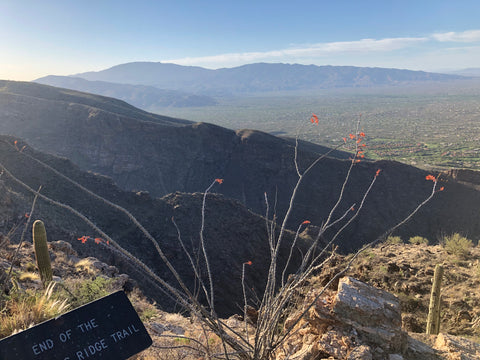
What's The Difference Between Fluency and Memorization
“I’m not really one of those parents who’s into flashcards, drills, and memorization,” is a response we sometimes get from parents when they hear the words “math kit.”
To those parents, we say, “Fantastic! Because neither are we!”
Page A Day Math is designed to help your child develop math fluency, not simply memorize a bunch of equations. In order to move on to higher-level math in middle and high school, students need to have developed automaticity with their basic math facts.
Page A Day Math helps your child develop that automaticity, not through timing and memorization, but in a way encouraging fluency and understanding. But, what does that mean? Aren’t memorization and fluency the same thing?
They aren’t, and the difference between them is what separates the students who simply remember the answer from the students who truly understand math.
What Is Fluency?
So, what is fluency? And how is it different than memorization? Memorization refers to being able to quickly recall the answer to an equation. It does not involve making any connections, and speed is the main focus. Fluency is different in that the main focus is not speed, but rather making connections. Students gaining fluency are encouraged to notice relationships and use strategies to get to an answer.
Teachers who focus on memorization and those who focus on fluency are both after the same end result—automaticity. Automaticity is the ability to perform a task quickly and effortlessly without needing to engage the mind in the low-level details needed to do it. What is the answer to 10 + 10? You know the answer is 20 without actually doing any computations in your head. In fact, you can’t help but think of the answer once you have gained automaticity.
So, if both methods are aimed at automaticity, what’s the difference? It turns out it’s a big one. Math education researcher, author, and educator Gina Kling describes three developmental phases that students go through in math. The first is counting. The second is using reasoning strategies to find an unknown answer. The third is mastering their facts. Students who only use memorization go from phase one to phase three. By leaving out phase two, there is certain conceptual knowledge that they don’t understand, which will make higher-level math more challenging.
Why Is Fluency Important?
To understand why fluency is so important, it helps to think about language. Have you ever played the game Taboo®? When you play, there is a word you are trying to get your teammates to say, but there is a list of words you are not allowed to use. So, if the word is “giraffe,” and you’re not allowed to say animal, neck, tall, long, or spotted, you might say, “this is a four-legged creature and the part of the body between its head and shoulders is very lengthy.”
How are we able to do that? It’s because we’ve mastered language fluency. We are flexible in our understanding of words and can work with them to get where we need to go. Could you play Taboo® in a foreign language? I can still remember preparing for presentations in French class and being terrified that my teacher was going to ask questions? Why? Because I had memorized what I was going to say. I could say the words I had memorized in the order I had memorized them, but I had no understanding of the language. Needless to say, I did not get far in French and was relieved that my university did not have a foreign language requirement.
Let’s apply this idea of flexibility to math. When a student has memorized their math facts and takes a test, if they come across 9 x 6 and cannot think of the answer, they simply get it wrong. A student who is working on math fluency might also forget 9 x 6, but they could reason that 10 x 6 is 60 and 60 – 6 is 54, so 9 x 6 must equal 54. Do you see the difference?
Memorization has its place in education. When there is a piece of information that cannot be easily connected to other information we know—like an address, year, or phone number—memorization is appropriate. But, when new information can be easily linked to something that we already know, memorization can limit our understanding.
Automaticity is essential for students in math. If a child has not automated basic skills, it will be difficult to master new skills. If a child has to think consciously about multiplication while learning fractions, the result will be cognitive conflict and fatigue.
Just as we learn word pronunciation and meaning before reading, math facts must be mastered before doing higher-level math. Can you imagine trying to read a novel while consciously thinking about the meaning of each word? You couldn’t do it. Just as we learn words over a period of time and master language in many situations—reading, writing, talking—math must be taught the same way in order to achieve fluency.
How Does Page A Day Math Help with Math Fluency?
So, how do we get our kids fluent in math and help them gain automaticity? They need a LOT of practice. And not just any practice. Constant testing, especially when under time constraints, can lead to math anxiety. Our kids need a chance to practice at their own pace over a long period of time.
Page A Day Math gives your child the chance to make connections as they practice. Each book in a series builds on the previous book. Your child isn’t being rushed. The idea is to provide consistent practice in a comfortable space at their own pace. Page A Day Math fosters math fluency through step-by-step, no-pressure, fun lessons that your child will enjoy.
Math automaticity has been found to be a strong predictor of future success in mathematics. Gaining math fluency and automaticity takes time and practice—a lot more time than is provided in the classroom. Page A Day Math provides the amount of practice necessary to achieve automaticity in a format that promotes fluency over memorization. Help your child love math and set them up for future success with Page A Day Math!
To try a sample math book from one of our math kits, click here.
Try our complimentary flashcards, click here.
About the Author and Creator of Page A Day Math
 Janice Marks
Janice Marks
Janice began her career in education to pursue teaching pre-algebra at BASIS Tucson North, a charter school currently ranked as the sixth-best STEM school in the country by Newsweek. There she found joy in teaching math, working with parents, and inspiring children to believe in themselves and thrive. This experience, along with helping her own children succeed in math, led her to develop the Page A Day Math system.





